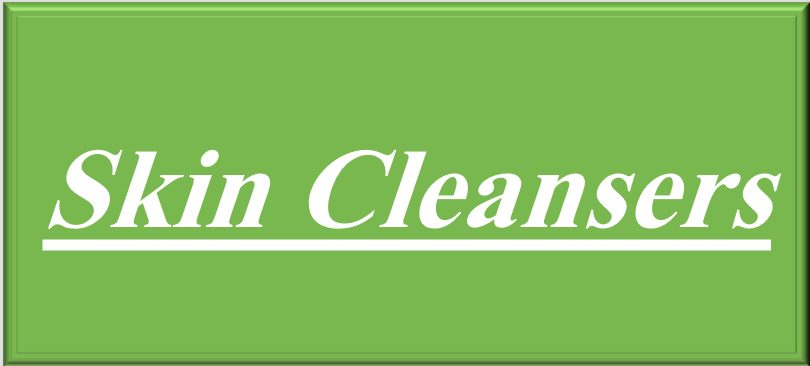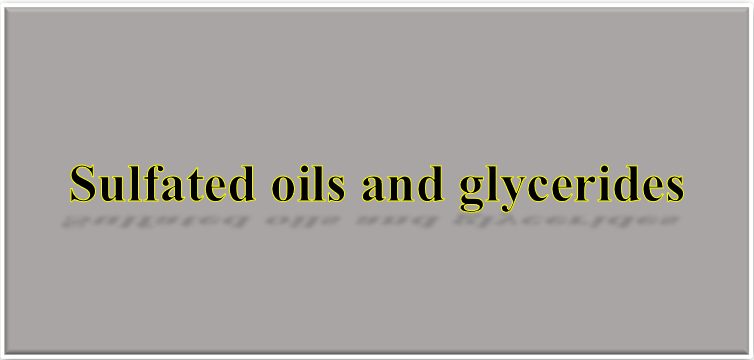In conditioners, the properties of cationic surfactants can be fully exploited without having to consider the question of compatibility with anionics. Consequently, cationics with high charge density, and properties undiluted by ethoxylation or polymerization, feature prominently among the preferred active ingredients. The hair conditioner should impart the following properties.
(i) Improved wet combing
(ii) Improved dry combing
(iii) Reduced fly-away (i.e. antistatic)
(iv) Increased gloss
(v) Increased volume
In addition, more specific claims, e.g. improved curl retention, repair of damage of the hair shaft, or moisturizing, may be required.
The most common physical form for a conditioner is the thick opaque liquid, although clear liquids have recently become popular. Ge sprays and non-pourable creams are available, while ‘leave-on’ conditioners (usually in spray form), as opposed to the more common ‘rinse-off products, are also in demand.
Classification of the raw materials into neatly defined categories is not as straightforward as with shampoos, but a suggestion is as follows:
• Primary surfactants (nearly always cationic)
• Polymers
• Bodying agents
• Auxiliary emulsifiers
• Oily components
• Other ‘active’ ingredients
• Thickeners
• Perfumes
• Preservatives
• Diluents (usually water)
• Colours
• Other non-functional ingredients.
Many of the ingredients are multifunctional within the formulation, and not all need be present.
Cationic surfactants
The most common principle active ingredients in hair conditioners are quaternary ammonium compounds (or ‘quats’). Typical examples are Cetyl trimethylammonium 3 chloride, Dicetyl dimethylammonium chloride, Stearyl dimethyl benzylammonium chloride. Some quats are relatively poorly biodegradable. A more recently introduced type of quat, the ‘ester quat’ is claimed to be better in this respect. The properties of the various quats differ and this is governed by some rules of thumb. The properties can often be related to charge density; a highly charged cationic will be more strongly attracted to the negatively charged hair surface but, once on the hair surface, the number, shape and size of the fatty chains in the molecule are the determinants.
Cationic polymers and other active ingredients
This class of compounds, used extensively in conditioning shampoos, has also become widely used in hair conditioners, alone or together with ordinary quats. Conditioners, particularly when used by those with naturally greasy hair, can leave the hair rather lank and with a tendency to re-soil rapidly. To some extent, this can be overcome by formulating with cationic polymers with few, if any, fatty side chains. The formulator may well wish to utilize the properties of both polymers and conventional quats, which can be freely mixed to get the best of both worlds. Conventional quats will often provide the necessary additional emulsifying power. Although the vast majority of conditioners are based on the established properties of cationics, a few products are not. Anionic systems are occasionally encountered, as are systems based on high levels of protein. A variety of exotic oils, vitamins and other materials have been proposed, but their substantivity from non-ionic or anionic emulsion bases must be considered questionable. Amino acids and panthenol are widely used, as in shampoos. A variety of humectants, for example acetamide MEA, lactamide MEA, polyols and sodium pyrrolidone carboxylate, are often included but ‘moisturising’ as applied to hair is not as well defined or documented as when applied to skin. The argument that, since hair consists of dead tissue, hair and skin must be treated quite differently, is frequently used. Nevertheless, many ingredients with non-proven action continue to be widely used in hair preparations that apparently satisfy consumer demands.
Bodying agents
As with shampoos, conditioners are perceived to be more effective when thick and creamy. This is usually achieved by using quite high levels of fatty alcohols along with other waxy esters, and hair conditioners containing only lipids that are solid at room temperature are common. The function of the oils and waxes is not merely one of giving body.
Auxiliary emulsifiers
Depending on the hydrophilic lipophilic balance (HLB) and the steric properties of the molecule, some quats are good emulsifiers, while others are not. Their use with anionic emulsifiers is clearly prevented by incompatibility; where sufficient emulsion stability cannot be obtained with the cationics alone, non-ionics are the preferred addition. There is a huge range to choose from, but ethoxylated fatty alcohols seem to be particularly effective. Structurally akin to the fatty alcohols present, they can form a harmonious blend, very much in line with the work of Griffin, who suggested blends of two emulsifiers (one with high and one with low HLB) chosen from a series whose members had related chemical structures.
Oil components
The effect of oils on ease of manufacture and product stability has already been referred to. In most formulations, such non-polar ingredients, used at typically low levels, can be interchanged without greatly affecting stability. Small quantities of exotic oils with attractive names may be included, although any sound technical reason for doing so is not always obvious. There has been a recent fashion for ‘oil-free’ conditioners; in the case of emulsion-based products, this need has little, if any, impact on product performance.
Thickeners
Cationic emulsions, which are inherently thick for any given solids content, do not usually require thickeners. They may be readily manipulated by modifying manufacturing conditions. Although they usually respond to salt in a similar way to shampoos, this method of thickening must be treated with extreme caution if irreversible emulsion breakdown is to be avoided. The following rules should be observed.
- Add only very small amounts of salt solution at one time, since the viscosity will peak at much lower salt levels than that of typical shampoos.
- Add salt solution only when the emulsion is cold (maximum temperature 30°C).
- Use dilute salt solution (10% maximum) and add very slowly with constant stirring.
- Investigate the effect of the rate of stirrer shear when the salt solution is added. A combination of a small amount of salt solution and high-shear mixing will often achieve a viscosity that cannot be obtained by one method alone.
- If working on a full-scale batch, always try a sample in the laboratory first and be careful to take into account any effects of scaling up.
Gum-type thickeners, the norm in clear conditioners may also be used. Cellulose derivatives dominate and generally work very well. Carbomers are rarely encountered because of their established incompatibility with most cationics.
Perfumes
Conditioners usually require only low levels of perfume. Typically, a perfume that is present in shampoo at 0.5% will perform equally well in conditioner at only 0.2%. A number of quats on the market use isopropanol as a solvent and this can sometimes leave a persistent odor that may be hard to mask. The best remedy is to select a grade of quat that does not suffer from this problem. Conditioners are fairly easy to perfume, but the stability of the perfume in the often quite strongly acidic environment of hair conditioners must be checked.
Preservatives
Most of the remarks made on shampoos also apply here, except that few ingredients used in conditioners will normally contain preservatives (proteins and herbal extracts are exceptions). Many, indeed most, cationic surfactants are active to some degree against microorganisms. Consequently, conditioners are fairly low-risk from a microbiological viewpoint and serious problems are mercifully rare.
Colors
The addition of colors to shampoos is perfectly straightforward using stock solutions (which must be adequately preserved) added to the batch. Most of the widely used colors are, however, anionic in character and, if added in the same way to the conditioner, will give rise to intensely colored spots. There are several ways, alone or in combination, of avoiding this:
- Add the colors when the bulk is still hot. Unfortunately, the product will normally whiten on cooling, especially if high shear stirring is used, making the color appear lighter.
- Use warmed color solutions.
- Use very dilute color solutions (< 0.1 % strength) and add slowly, avoiding the creation of high local concentrations.
A few colors, such as rhodamine, because of their cationic nature, are fully compatible with conditioners.
References:
- Harry, R.J. (1982) Harry’s Cosmeticology. 7thedn. Chapter 26, p. 498. Longmans, London.
- Hunting, A.L.L. Encyclopaedia of Conditioning Rinse Ingredients. CTFA (1991) London Micelle Press.
- CTFA (1991) International Cosmetic Ingredient Dictionary, 4th edn. CTFA, Inc., Washington, DC.
- Milwidsky, B. (1990) After shampoo preparations. Household and Personal Products Industry 27(5) 78.
- Idson, B. and Lee, W. (1983) Update on hair conditioner ingredients. Toilet. 98(10) 41.
- Quaternary ammonium compounds and their application in hair conditioners (1988) CTMS 1(4) 6.
- Lunn, A.C. and Evans, R.E. (1977) The electrostatic properties of human hair. Soc. Cosmet. Chem. 28(9) 549.
- F. WILLIAMS, W.H. SCHMITT (1996), Chemistry and Technology of the Cosmetics and Toiletries Industry
- Allandic, A. and Gummer, G. (1993) Hair conditioning-quaternary ammonium compounds on various hair types. Toilet. 108(3) 107.
- Alexander, P. (1987) Cationic polymers for skin and hair conditioning. Manufacturing Chemist 88(7) 24.
- Woodruff, J. (1994) Staying in condition. Manufacturing Chemist 65(3) 18.
- Griffin, W.G. (1949) Soc. Cosmet. Chern. I 311.










